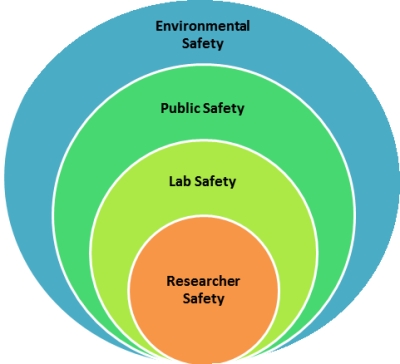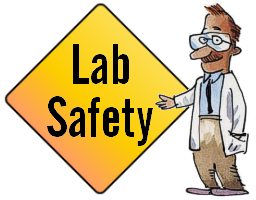Team:UEA-JIC Norwich/Safety
From 2011.igem.org
Contents |
BIOLOGICAL SAFETY
______________________________________
RESEARCHER SAFETY
Our project requires precautions to ensure the safety of the researchers within the lab, as with any other scientific experiment. This involves the use of gloves and labcoats to protect from chemical spills, which are corrosive or irritant, such as luciferin. Also, ensuring the use of masks when using powdered media. The Escherichia coli (E. coli) strains (NEB 5-alpha Competent E. coli) (2.) and Agilent XL10-Gold Ultracompetent Cells (3.) used do not contain any disease causing genes and the moss Physcomitrella patens (P. patens) and algae used pose no threat to any of the team. Our research project also utilises Moss and Algae, however they are not pathogenic and do not pose any harm to researchers or the general public. Arguably the greatest the protection a researcher can have, in addition to protective equipment is good laboratory practice. We have taken this to heart and believe it is central to all bio safey issues as well as ensuring the quality of the research we carry out.
LAB SAFETY
There are many guidelines, laws and policies which ensure a safe working environment for researchers. These cover general health and safety issues as well as those which are specific to bio safety.
The UK has national safety guidelines on bio safety (6.)
The University of East Anglia has a health and safety policy (1.)
The JIC operates under the standard biosafety rules of the UK (4.)
Both the JIC and UEA operate under the Health and Safety at Work Act, 1974, which ensures that employers have a duty of care to the safety of their employees (5.)
>HEALTH AND SAFETY TRAINING
Before commencing our research project we received full health and safety training at the JIC and UEA. Our training included use of personal protective equipment (lab coat gloves etc.), fire safety training, principles of good laboratory practice, training on the importance of chemical safety and the correct way to dispose of all organisms that are used in the lab.
>BIOSAFETY GROUP
There is a biosafety group run by the JIC, known as the Biosafety International Network and Advisory Service (BINAS) of the United Nations Industrial Development Organization (UNIDO). This course is run by UDEC for past two years at the JIC and is now being expanded elsewhere around the globe.
>BIOBRICK PARTS AND SAFETY
No, our parts do not pose any risk to public or environmental safety.
PUBLIC SAFETY
Our project poses very little risk to public safety, as we are using a strain of non-pathogenic algae, known as chlamydomonas reinhardtii. The recombinant DNA we are creating emits light; it is difficult to see how this could ever engender pathogenicity even after horizontal gene transfer to other organisms. Regardless of this, our project must be properly contained. Control measures to ensure this include keeping the windows of the laboratory closed, autoclaving all waste and ensuring that the fume cupboard is clean and that no waste is left behind to ensure that the aerodynamics are sustained.
ENVIRONMENTAL SAFETY
We carefully designed our research project to minimise risk and to ensure that our research posed little risk to environmental safety. As part of the bio safety review process for our project we have submitted a GMRA which analyses the risk of GM work on moss and on algae. All organisms used in our project do not contain any pathogenic genes and they could not survive outside laboratory conditions. We are using lab strains of E. coli, which are unable to live outside the lab as they are out competed as they are optimized for lab conditions. The bacteria do not have any additional fitness advantage, except that they have antibiotic resistance. We have been trained to take appropriate measures to ensure that correct bio containment practices are carried out.
DEALING WITH SAFETY ISSUES THAT COULD BE USEFUL FOR FUTURE iGEM COMPETITIONS
In addition to meeting safety requirements outlined by the JIC, iGEM students should be required to take an online course provided by iGEM to standardize training for all participating students across the globe. The Event Tree Analysis and Fault Tree Analysis described on the iGEM safety page are both promising ways to assure that biological circuits remain safe even when one part fails. This concept could be made a reality if the Parts Registry devoted a special page on their site to catalog certain arrangements of parts that produce unintended consequences. If every team were able to submit their findings to such a page, it would be easy to see trends in the data and make hypotheses as to which parts should not be used in conjunction in the future. All the students working on the project have successfully completed the Chemical and Hazardous Waste Handling course given by the John Innes Centre, Environmental Health & Safety Office.
REFERENCES
1.University of East Anglia STATEMENT OF HEALTH AND SAFETY POLICY: http://www.uea.ac.uk/uss/safetypolicy.
2.NEB 5-alpha Competent E. coli Information: http://www.neb.uk.com/productcatalogue/productinfotransfer.aspx?id=C2988.
3.Agilent XL10-Gold Ultracompetent Cells Information: http://www.genomics.agilent.com/files/PDF/CofALot%200006076080.pdf?ts=40785.3875403009
4. JIC Health and Safety: http://www.jic.ac.uk/corporate/about/policies/health-safety.htm
5. Health and Safety at Work Act, 1974: http://www.hse.gov.uk/legislation/hswa.htm
6. UK guidelines on bio safety http://www.hse.gov.uk/biosafety/gmo/law.htm
</html>
_______________________________
.
 "
"




